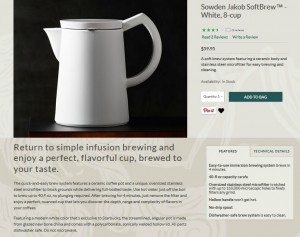 Some Starbucks locations are selling the Sowden Softbrew brewer. You’re most likely to find it in the larger Starbucks stores, and not smaller locations with little merchandise. It’s also available at StarbucksStore.com.
Some Starbucks locations are selling the Sowden Softbrew brewer. You’re most likely to find it in the larger Starbucks stores, and not smaller locations with little merchandise. It’s also available at StarbucksStore.com.
This is an immersion brew method. When we talk about an immersion method, coffee is brewed by being soaked or steeped in water as opposed to having hot water poured over the grounds, like a typical coffee pot.
When brewing with the Sowden Softbrew, you still want to follow the four fundamentals of a great cup of coffee:
FOUR FUNDAMENTALS OF GREAT COFFEE:
Proportion: For almost every single brew method, the proportion of water to ground coffee is the same: 2 tablespoons of coffee for every six ounces of water. If you tweak this, you’ll get a coffee that is either over or under-extracted, and won’t taste right. I can think of only two exceptions to this proportion rule: If making iced coffee, you’ll use twice as much coffee. Iced coffee is always made stronger than hot coffee in order adjust to melting ice in a cup. And it seems that an Aeropress coffee maker uses a stronger ratio. But basically, plan on using 2 tablespoons of coffee for every six ounces of water for almost every single common home brew method: French press, pour over, Clever dripper, common coffee pot on a burner, and Sowden Softbrew.
Water: Use fresh, filtered water.
Grind: Use the right coffee grind for your brew method. Generally speaking, brew methods where coffee is immersed in water versus hot water poured over the water, will use a coarser grind. For a French press, or Sowden Softbrew, use a coarse grind. For a pour over, or standard at-home coffee pot with a burner, use more of a medium grind. You can ask your barista to grind your pound of coffee right there in the store for you.
Freshness: Do not use expired coffee. There are two groups of coffees to think about. The first is all the coffee you buy which comes in Flavorlock packaging: This is, without a doubt, the overwhelming majority of coffee sales. At a Starbucks store (whether a core store or a Reserve store), you’ll find coffee in Flavorlock packaging. The Starbucks coffee in the coffee aisle at your local grocery store is in Flavorlock packaging. Once you’ve opened up the bag of coffee, use it within 7 days. Toss out coffee that is past its expiration on the back and/or that has been open more than 7 days. The second coffee group is all the hand-scooped coffee: This would be the coffees you find on the scoop bar at the Roastery. Pay attention to the date of roasting. Allow between 5 and 8 days for the coffee to de-gas. The coffee is still developing its flavor in this stage, like a green banana ripening to a better tasting banana. All the Flavorlock packaged coffee is degassed (it would be incredibly rare to find Flavorlocked coffee that was just roasted within the past 5 days or so). After the de-gassing phase, you have 7 days to use the coffee for ideal freshness. Toss out coffee that is more than 15 days from the date of roasting has gone by (and of course, it’s NOT in Flavorlock packaging). If coffee is 15 days beyond the date of roasting, and ‘hand scooped’ (not in Flavorlock packaging), it’s considered expired coffee. Toss it out.
Now that you’re aware of the four fundamentals of a great cup of coffee, you’re ready to make a great pot of coffee with a Sowden Softbrew.
Before we start, I was inspired to produce this article after seeing this video here:
1912 Pike: How to Sowden Softbrew
My first journey with the Sowden Softbrew was a quick tasting of Starbucks Gold Coast Blend. Barista Matty at East Olive Way Starbucks brewed a full pot of Gold Coast Blend. We tore off the packaging, opened up a bag of Gold Coast, and ground it for a coarse grind:
If you’re making a full pot, use 13 tablespoons of coarse-grind coffee, and fill to the “max” line inside the metal filter.
Scoop the coffee into the metal filter. The instructions say to make sure that all the grounds are wet. Matty used a spoon to mix the coffee a little to make sure that the grounds were saturated in water. Here’s what it looks like with the ground coffee in the metal filter:
Matty added water and stirred just a bit:
We set a timer for four minutes and waited. Once four minutes were up, we pulled out the metal filter. Voilà! A perfect full pot of Gold Coast Blend!
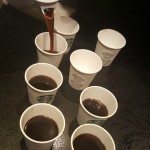 This is a super easy and reliable to make a pot of coffee at home. If you really want just one single cup of coffee (8 ounces to 12 ounces of coffee), you may want to use a pour over or a Clever dripper, but when you need a few cups of coffee, this is perfect!
This is a super easy and reliable to make a pot of coffee at home. If you really want just one single cup of coffee (8 ounces to 12 ounces of coffee), you may want to use a pour over or a Clever dripper, but when you need a few cups of coffee, this is perfect!
The flavor profile is a little less oily than a French press because it has the metal filter, but it seems like it’s a little bit oilier than a paper filter method like a pour over or Clever dripper.
The metal filter that comes with this pitcher is what makes this brew method so special. According to their website, you can use any grind with the Sowden Softbrew! This means you can use this brew method with any pre-ground coffee from the grocery store!
“The filter of the SoftBrew™ is its technological heart, with up to 160 000 holes it is fine enough to block all grounds larger than 150microns. Practically speaking this means that unlike all other coffee making methods currently available on the market, you are free to use any type of grind you like. Fine, medium or coarse, the SoftBrew™ filter will only allow for the passage of the desirable finest grounds (fines) ensuring the thick full-bodied taste which is the hallmark of all sophisticated coffee.“
One more interesting thing about the Sowden Softbrew: Because it is designed as an immersion brew system with a large pitcher, it looks like it would work perfectly to make cold brew coffee at home, if that interests you. When making any kind of iced coffee, ideally you use twice as much coffee. Traditionally, iced coffees are brewed extra strong to accommodate the melting ice, which is effectively diluting the coffee. You might want to experiment a bit with what you like. I attempted a cold brew with the Sowden Softbrew, using nearly 26 tablespoons of coffee to get a “double strength” coffee, which is how iced coffee is usually made. You do get a very rich, strong base of coffee. If you’re not plan on using a lot of ice, you could maybe use a little less coffee. I’d like to know how this works out for you. Mine was pretty good (I used the Reserve Yirgacheffe Chelba) when crammed full of ice in the cup!
Log into the Starbucks Digital Coffee Passport to keep track of your coffee tastings!
This was fun to fill in an entry in my Coffee Passport. Here’s the one-page blurb on Gold Coast Blend from the passport:
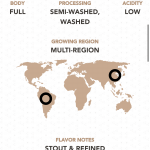
It was a wonderfully low acidity, smooth, dark, great cup of coffee. Sometimes the core coffees get overlooked with all the wonderful Reserve coffees, but I’m often reminded that there are great core coffees at Starbucks!
Once I filled in notes, (and I even uploaded a pic from my coffee tasting into the passport) I earned a coffee stamp! Here’s what it looks like!
 Hope you enjoyed this introduction to the Sowden Softbrew!
Hope you enjoyed this introduction to the Sowden Softbrew!
Related posts
12 Comments
Leave a Reply Cancel reply
You must be logged in to post a comment.
Sponsors
Recent Comments
- DEVIN on Compostable Straws Land in Seattle Starbucks Stores
- coffeebeanz on Why do you go to Starbucks less often? (If that’s true for you)
- Willi on You can now buy a Siren statue: $6,000
- Willi on A major revamp of your drink recipe: Testing syrup extracts and cane sugar
- Skip on Why do you go to Starbucks less often? (If that’s true for you)



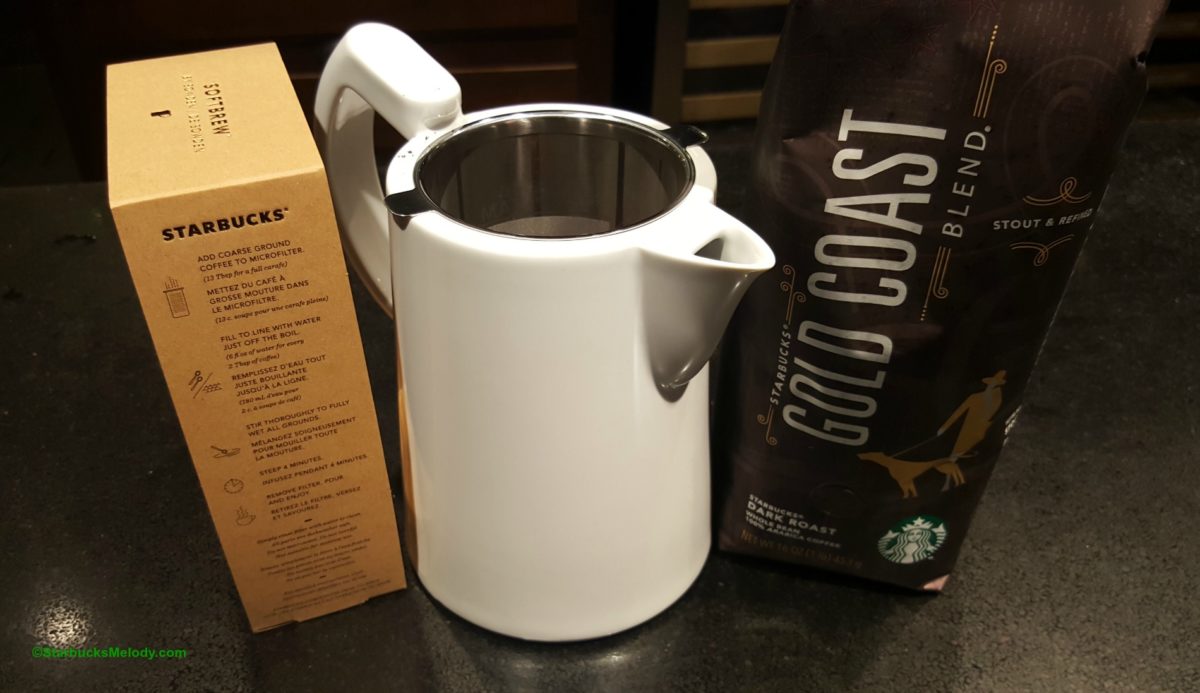
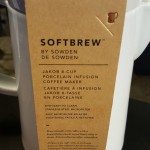
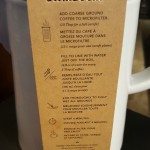
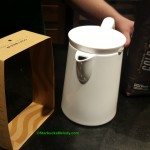
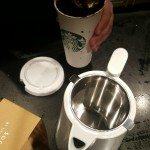
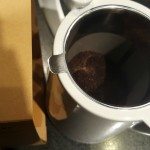
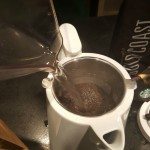
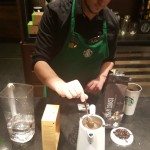



One of my favorite new brewing methods! I plan to make a couple pots today to share a couple coffees with my team! Happy Monday and have a wonderful week Melody!
Thank you Diele!
Melody, I’ve seen this at several locations here in Jersey. So glad you wrote about them because I had no idea how to use this brew method but figured it had to be something unique being offered.
This is my favourite method of brewing coffee at home now – I find it way easier to clean than a French press, so I’m more likely to go to the effort of making a pot! I’ve found this method to produce a sweeter taste profile as well – not overly sweet, but a hint of sweetness at the finish.
My new favourite is a cup of soft brewed Casi Cielo!
I had the chance to see one of these in person at a local store recently. It is a beautiful item, and I like that it would not only make a nice cup of coffee, but it would also look pretty sitting on the counter. Seriously considering picking this up. I’m wondering if anyone knows how long it will keep coffee hot if you prepare a hot pot?
Love this! I’m so intrigued with the Softbrew system! I’m so glad you were able to find one and get us all this great information! Maybe I will have to think about buying myself one, now that I understand it! 🙂
I’m also curious as to if the ceramic carafe is insulated or if it keeps the coffee hot for a while…? I’ve found with my pour over as well as my french press that ignoring advice and using a very fine grind coffee brews a much more flavorful cup- I actually did a side by side with all other variables the same just changing the grind (i had them grind at the store on “turkish”) and never looked back!
Neat!
I’m a little late to the party, but I just looked up the FAQs on the Sowden website re: thermal capacity. The company says your coffee will stay warm and at a drinkable temperature for 20 minutes after you pour your first cup. Hope this helps! It is a beauty, isn’t it?
Anyone else seeing measurement issues? Jakob pot is labeled “8 cup” – presumably 5 or 6 oz cups, since it’s not that big. Instructions say use 13 tablespoons for full pot, 2 tbs per 6 oz cup – which would be 39 oz, so, ok 8 “5 oz cups” …. except …. says fill to max line …. if you fill to max line with filter empty, you’ll find it takes 27 oz of water, less with coffee in it ….. and by the way, very hard to fill to max line because coffee “blooms” (need to stir down assiduously) and then the line is still covered up w/ coffee grounds! I find I need to measure water before I heat it, and adjust coffee to measured water. That said, love the coffeed!
I bought one of these pots at Starbucks last summer. My son LOVES it and wants one – but they don’t seem to be available – anywhere! One on eBay for at least twice the price I paid at Starbucks. Any leads?
@Betty Wood – Funny you should say that. I’ve noticed that these are nearly irreplaceable. Starbucks no longer has them. They’re twice as much as the original versions on Amazon.com.
I believe the company is based out of the UK, and they’re not normally sold in the US outside of the brief time Starbucks had them.
I really wish they were – I’d been looking to give one as a gift to a friend and realized that it’s impossible to buy another. 🙁